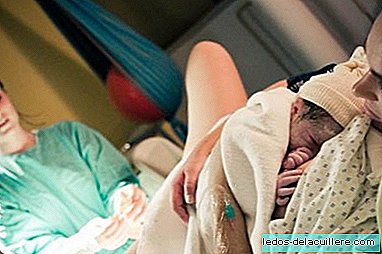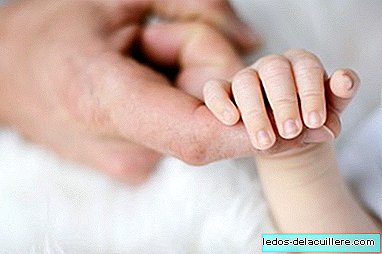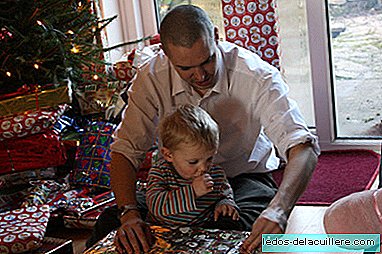
Once the baby is born, the so-called third stage of labor begins, which is the stage in which the woman expels the placenta from her body. Although it seems that all the work is already done because the baby has already left, it is a relatively delicate moment because It is at that time when postpartum hemorrhage can occur, which is the cause of a quarter of maternal deaths in the world.
As the degree of bleeding is associated with the time that passes between the baby is born and the placenta is detached, an attempt is made to agree on the time available to wait for the placenta to leave (after that the uterus must contract to avoid hemorrhage) and the way to act so that everything happens with the minimum possible risks.
It is said that the maximum it can take a woman to expel a placenta if she is being helped for it is 30 minutes, while if it is expected to happen spontaneously it is 60 minutes. The problem is that of the question titled this entry: Should professionals help to get the placenta out or is it better to let it go out alone?
Expectant management of the third stage of labor
In the same way that at the time of giving birth many professionals recommend carrying out an expectant attitude, observing and acting only if there are problems (I agree on it, as I have commented many times), many professionals recommend to continue in the same line once the baby is already born.
The reason for an expectant management is to continue with a distant treatment, to make the birth experience more natural, following the same philosophy that if the body is able to give birth to a baby, it will be able after expelling the placenta without problems.
An expectant attitude, in any case, does not mean doing nothing, as it is recommended that the woman be incorporated so that the gravity helps to expel the placenta and stimulation of the nipples is done so that oxytocin is secreted and the uterus begins to contracting (a baby is a perfect nipple stimulator and, since it coincides that there is one, which is what the mother has just given birth, it is advisable to breastfeed at that time, and not later).
The active management of the third part of labor
Other professionals, on the other hand, suggest that even when the birth has been natural, with hardly any intervention from the professionals, It is better to carry out some actions to reduce the incidence of postpartum hemorrhage.
These actions would be to administer prophylactic oxytocin before the placenta is expelled, an impingement and premature cutting of the umbilical cord once the baby leaves and the use of controlled traction on the cord (as if pulling it) to achieve separation of the junction between placenta and uterus
What does the evidence say about it?

A meta-analysis conducted by Cochrane, including five studies comparing the suitability of one practice or another, demonstrated that when active management of the third stage of labor is performed the hemorrhagic losses are lower (women lose on average 79 ml. of blood less), chances of suffering postpartum hemorrhages are 38% less and the duration of the third stage of labor is reduced by up to 10 minutes on average.
On the other hand, the same active management increases the risk of nausea in mothers (up to almost twice as likely), vomiting, headache and increased distolic blood pressure (the low figure) above 100 mm Hg. Further, active handling involves clamping and premature cutting of the cord, which lately is being discouraged because of the benefits that it takes for the baby to wait a few minutes.
Concluding
Both the commented study and the Clinical Practice Guide on Normal Delivery Care finally recommend active management of placental delivery as an initial method.
Of course, it should be done having informed women (this should already be done during pregnancy) that active management decreases the risk of postpartum hemorrhage, shortens the duration of the third stage and decreases the need to use oxytocin therapeutically.
I have not read it anywhere, but I think that obviously, a mother should also be informed of the risks of active management and the consequences of premature cord cutting, as well as the possibility of carrying out expectant management, explaining the benefits and explaining the consequences that may derive from it. Only then, with all the information, a woman may be able to decide what she considers best.
Despite recommending active management as a method of choice, it is indicated that expectant driving is a valid option If a woman asks to be treated that way.
I personally agree with the intervention in the third phase of labor to minimize as much as possible the risk of bleeding, however it would eliminate the clamping and premature cutting of the cord from the list. Once the baby is born, that they take their time, that they cut when a few minutes have passed and after every effort is made to ensure adequate contraction of the uterus and avoid a great scare.












